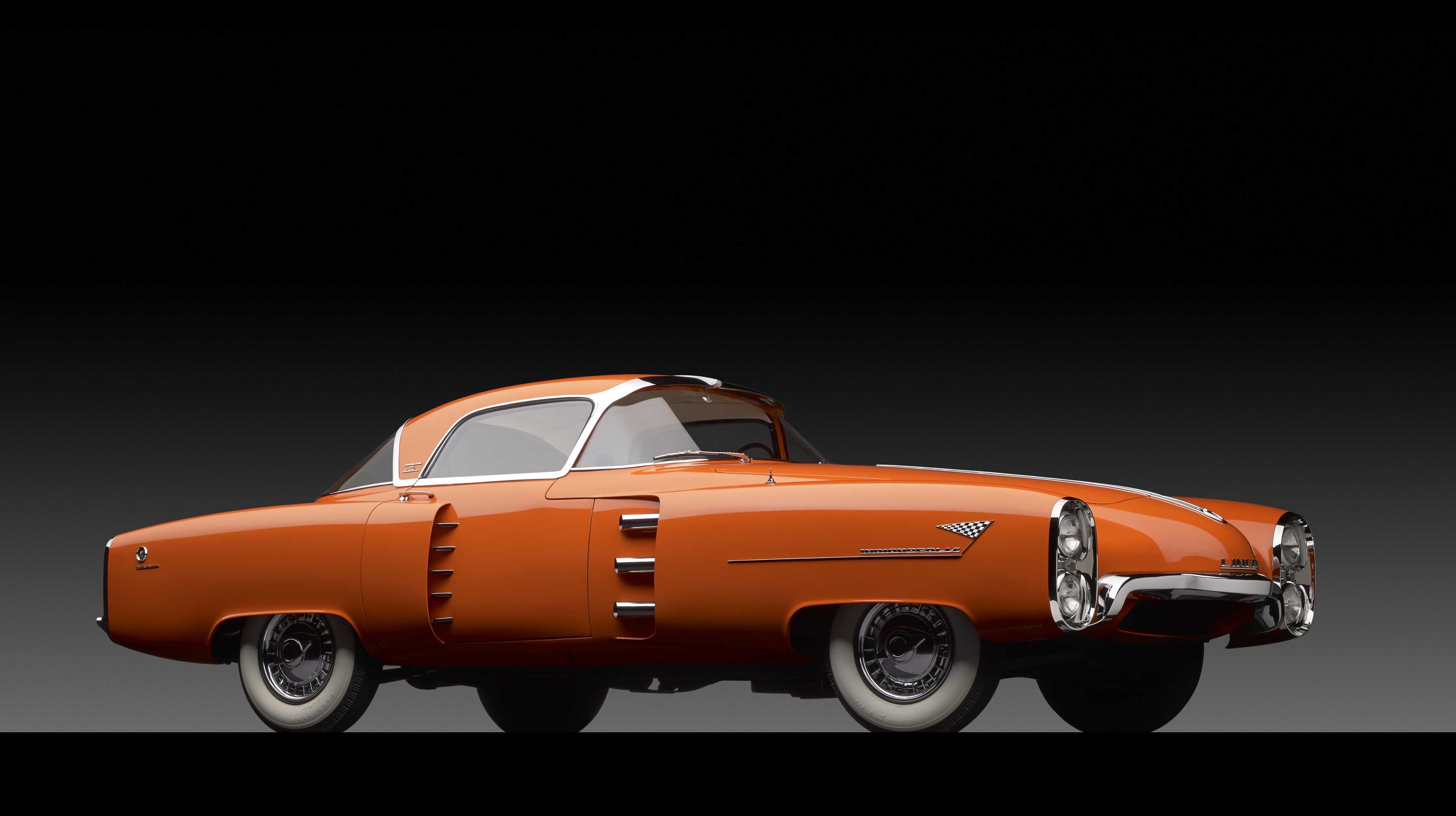1955 Lincoln Indianapolis Concept Car

The descriptions of the Classic Cars in the Directory were partly generated or supplemented with the help of artificial intelligence (AI). The content may occasionally not always be entirely accurate or factually correct despite careful checking.
The Lincoln Indianapolis Concept Car of 1955 was a remarkable piece of engineering, featuring a number of advanced technological features that were ahead of their time. First and foremost, the car was powered by a potent Quad Cam V8 engine, a design that was quite rare for its era. This engine was capable of producing 200 horsepower and was mated to a 3-speed manual transmission. The car's rear-end was suspended by a novel "air-ride" suspension system, which allowed for a cushioned and smoother ride. Its lightweight construction, comprised of aircraft-style aluminum skin over a tube-frame chassis, allowed the car to achieve a top speed of 140 mph.
The car's bodywork was spectacularly innovative, with a sleek and aerodynamic design that was unlike anything else on the market. It featured a low-slung hood with a prominent air intake, flared fenders, and a long, tapered tail. The car's body was painted in a bold and vibrant shade of red, and the interior was upholstered in high-quality leather with contrasting white accents. The cockpit was centered around a unique set of gauges and controls that were clearly designed with the driver in mind.
Perhaps the most noteworthy technical feature of the Lincoln Indianapolis Concept Car was its advanced braking system. It was one of the first cars to feature disc brakes, a technology that was still in its infancy at the time. These brakes provided exceptional stopping power, and were located on all four wheels. This allowed for superior handling and control, particularly at high speeds.
Other technological features of the Lincoln Indianapolis Concept Car included power-assisted steering, power windows, and a powerful radio with external and internal speakers. The car also featured a number of safety features, including a wraparound windshield, padded dashboard, and seatbelts.
Overall, the Lincoln Indianapolis Concept Car of 1955 was an impressive demonstration of automotive engineering and design. With its powerful and advanced drivetrain, innovative bodywork, and cutting-edge braking system, the car represented a new era in technological advancement within the industry. It remains a classic example of mid-century American automobile design, and is a testament to the ingenuity and creativity of its creators.
Milestones
• The Lincoln Indianapolis Concept car was unveiled at the Chicago Auto Show in 1955.• The car was designed by William M. Schmidt, who previously worked for Raymond Loewy.
• It was built by the legendary coachbuilder, Carrozzeria Boano of Italy.
• The car had a lightweight hand-formed aluminum body and a striking two-tone paint scheme.
• It featured a mid-mounted V8 engine and rear-wheel drive, giving it a unique handling performance.
• The interior was designed for practicality and comfort, with ample seating space and user-friendly controls.
• The Lincoln Indianapolis Concept car was considered ahead of its time, as it featured advanced aerodynamics and engineering.
• The car was exhibited at numerous auto shows across the United States and Europe, drawing widespread attention and acclaim.
• The Lincoln Indianapolis Concept car served as an inspiration for subsequent Lincoln models, particularly the Continental Mark II.
• Today, the Lincoln Indianapolis Concept car is considered a classic and is highly sought after by collectors and automotive enthusiasts.
Technical
1. The Lincoln Indianapolis Concept car was designed and built in 1955 by the Lincoln Motor Company.The car was a two-seater, experimental sports car that showcased advanced styling and engineering features of the time.
The exterior of the Lincoln Indianapolis Concept featured a low-slung, aerodynamic body with a pointed hood and sweeping curves.
The car was powered by a V8 engine producing 250 horsepower, with a top speed of 150 mph.
The Lincoln Indianapolis Concept was equipped with a four-speed manual transmission, oversized brakes, and a reinforced chassis to handle the high-speed capabilities.
The interior of the car was designed with a futuristic, aircraft-inspired cockpit featuring a wraparound windshield and a control panel that extended the length of the dashboard.
The Lincoln Indianapolis Concept also featured innovative safety features, such as an early version of a seatbelt and a full roll cage.
The car was showcased at the 1955 Chicago Auto Show and generated significant interest among automotive enthusiasts and the press.
Although the Lincoln Indianapolis Concept never went into production, it paved the way for future sports car designs and established Lincoln as a leader in automotive innovation.
